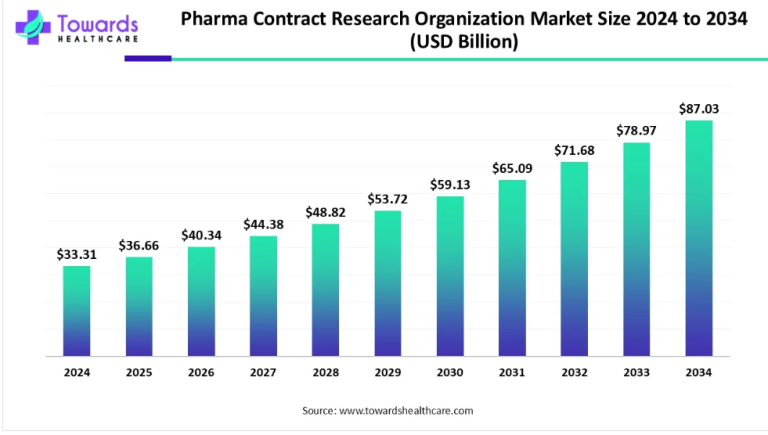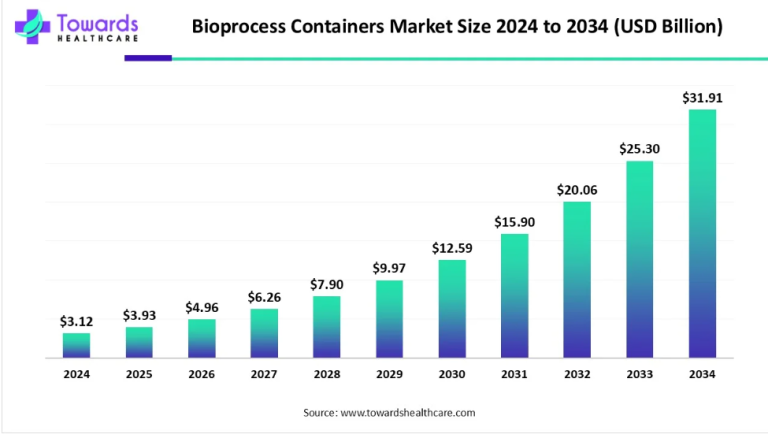
The osteoarthritis market is poised for substantial growth, with projections indicating a significant boost from USD 8.60 billion in 2023 to approximately USD 19.15 billion by 2032. This promising expansion is expected to occur at a Compound Annual Growth Rate (CAGR) of 8.4% over the forecast period spanning from 2024 to 2032. Such estimations underscore the increasing prevalence and impact of osteoarthritis on global healthcare systems and the economy at large.
Factors Driving Market Growth
Several key factors contribute to the projected surge in the osteoarthritis market. Firstly, the aging population, particularly in developed regions, is experiencing a higher incidence of osteoarthritis due to natural wear and tear on joints over time. Additionally, sedentary lifestyles and rising obesity rates further exacerbate the prevalence of this degenerative joint disease.
Furthermore, advancements in medical research and technology are driving innovation in osteoarthritis treatment options. This includes the development of novel pharmaceuticals, biologics, and medical devices aimed at managing symptoms, preserving joint function, and improving overall quality of life for affected individuals.
Osteoarthritis, a prevalent joint ailment, has been increasingly recognized as a significant public health concern worldwide. According to recent data from the Centers for Disease Control and Prevention (CDC), osteoarthritis accounted for 2.5% of total health issues experienced by individuals in 2023, with musculoskeletal conditions bearing a substantial burden of 20%. This underscores the importance of understanding and addressing this condition effectively.
Download a short version of this report @ https://www.towardshealthcare.com/personalized-scope/5136
The Global Impact of Osteoarthritis
Globally, osteoarthritis affects approximately 3.3 to 3.6% of the population, making it a widespread health issue. Its prevalence varies across regions and demographic groups, with certain factors such as age, genetics, and lifestyle choices contributing to its development. As one of the leading causes of disability, osteoarthritis ranks as the 11th most disabling condition worldwide, highlighting its profound impact on individuals’ quality of life.
Understanding the Pathophysiology
Osteoarthritis is characterized by the progressive degeneration of joint cartilage, leading to pain, stiffness, and impaired mobility. The gradual breakdown of cartilage tissue results in the exposure of underlying bone, leading to inflammation and structural changes within the joint. While the exact mechanisms underlying osteoarthritis remain complex and multifactorial, it is believed to involve a combination of genetic predisposition, mechanical stress, and biochemical factors.
Risk Factors and Susceptibility
Several risk factors predispose individuals to the development of osteoarthritis, including:
- Age: The risk of osteoarthritis increases with advancing age, with older adults being more susceptible to its onset and progression.
- Obesity: Excess body weight places increased stress on weight-bearing joints, such as the knees and hips, predisposing individuals to osteoarthritis.
- Joint Trauma: Previous joint injuries or trauma, such as fractures or ligament tears, can accelerate the degenerative process and increase the risk of osteoarthritis.
- Genetics: Genetic factors play a role in determining an individual’s susceptibility to osteoarthritis, with certain gene variants associated with an increased risk of developing the condition.
- Occupational Factors: Jobs that involve repetitive joint movements or heavy lifting may increase the risk of osteoarthritis over time.
Clinical Presentation and Symptoms
The clinical presentation of osteoarthritis varies depending on the affected joint and the severity of the condition. Common symptoms include:
- Pain: Persistent joint pain, particularly during movement or weight-bearing activities, is a hallmark feature of osteoarthritis.
- Stiffness: Joint stiffness, especially after periods of inactivity or prolonged rest, is a common complaint among individuals with osteoarthritis.
- Swelling: Joint swelling or inflammation may occur, particularly in the later stages of the disease, as a result of synovial inflammation and fluid accumulation.
- Decreased Range of Motion: Osteoarthritis can lead to a reduced range of motion in affected joints, making it difficult to perform daily activities such as bending, squatting, or reaching.
Diagnosis and Management Strategies
The diagnosis of osteoarthritis typically involves a combination of clinical evaluation, imaging studies, and laboratory tests. Radiographic imaging, such as X-rays or MRI scans, may reveal characteristic changes in joint structure, including joint space narrowing, osteophyte formation, and subchondral bone sclerosis.
Non-pharmacological Interventions
Non-pharmacological interventions play a crucial role in the management of osteoarthritis and may include:
- Exercise: Regular physical activity, including aerobic exercise, strength training, and flexibility exercises, can help improve joint function, reduce pain, and enhance overall quality of life.
- Weight Management: Weight loss in overweight or obese individuals can significantly reduce the load on weight-bearing joints, thereby alleviating symptoms and slowing disease progression.
- Joint Protection: Using assistive devices such as braces, splints, or canes can help alleviate joint stress and reduce pain during daily activities.
Pharmacological Treatments
Pharmacological treatments for osteoarthritis aim to alleviate pain, reduce inflammation, and improve joint function. Commonly prescribed medications include:
- Analgesics: Over-the-counter pain relievers such as acetaminophen or nonsteroidal anti-inflammatory drugs (NSAIDs) may help alleviate mild to moderate pain associated with osteoarthritis.
- Topical Agents: Topical creams or gels containing NSAIDs, capsaicin, or menthol can provide localized pain relief and reduce inflammation.
- Intra-articular Injections: Corticosteroid injections or hyaluronic acid injections may be recommended for individuals with persistent joint pain that is unresponsive to oral medications.
Surgical Interventions
In cases of severe osteoarthritis that do not respond to conservative treatments, surgical interventions may be considered. Common surgical procedures for osteoarthritis include:
- Joint Replacement Surgery: Total joint replacement surgery, such as hip or knee replacement, may be recommended to replace damaged joint surfaces with artificial implants, thereby reducing pain and improving joint function.
- Arthroscopic Surgery: Arthroscopic procedures, such as debridement or lavage, may be performed to remove damaged tissue or debris from the joint, thereby alleviating symptoms and improving mobility.
Emerging Therapeutic Approaches
One noteworthy trend in the osteoarthritis market is the emergence of regenerative medicine and gene therapy as potential therapeutic approaches. Stem cell therapy, in particular, holds promise for regenerating damaged cartilage and slowing disease progression, offering new hope for patients seeking alternatives to traditional treatments like analgesics and joint replacement surgery.
Moreover, the integration of artificial intelligence (AI) and machine learning (ML) in healthcare is revolutionizing disease management and personalized treatment strategies. By leveraging big data analytics and predictive modeling, healthcare providers can optimize treatment outcomes and tailor interventions to individual patient needs, thereby maximizing efficacy and minimizing adverse effects.
Market Challenges and Opportunities
Despite the optimistic growth projections, the osteoarthritis market faces several challenges that warrant attention. These include regulatory hurdles, reimbursement limitations, and the need for robust clinical evidence to support the efficacy and safety of emerging therapies. Additionally, disparities in access to healthcare and disparities in access to healthcare and treatment options underscore the importance of addressing healthcare inequalities to ensure equitable patient outcomes.
However, these challenges also present opportunities for industry stakeholders to collaborate and innovate in addressing unmet medical needs. By investing in research and development, fostering partnerships across academia and industry, and advocating for policy reforms, stakeholders can drive progress towards more effective and accessible treatments for osteoarthritis patients worldwide.
Recent Developments
- In September 2021, Novartis announced that LNA043 received fast-track designation from the US Food and Drug Administration (FDA) for knee osteoarthritis treatment.
- In February 2021, Moebius Medical revealed that MM-II, an innovative treatment option for knee osteoarthritis symptoms, is undergoing Phase IIb clinical trials. These trials aim to compare the effectiveness and safety of different MM-II doses with placebo in patients experiencing knee osteoarthritis symptoms.
Osteoarthritis Market Players
- Zimmer Biomet
- Pfizer
- GlaxoSmithKline
- Bayer Consumer Health
- Merck & Co.
- Mylan N.V.
- Anika Therapeutics Inc.
- Huons
- Johnson & Johnson
Osteoarthritis Market Segments
By Type
- Knee Osteoarthritis
- Hip Osteoarthritis
- Hand Osteoarthritis
- Others
By Diagnosis
- Imaging Tests
- Blood Tests
- Joint Fluid Analysis
By Treatment
- Medication
- Analgesic
- NSAIDs
- Counterirritants
- Corticosteroids
- Hyaluronic Acid
- Supportive Devices
- Surgery
By Geography
- North America
- Europe
- Asia Pacific
- Middle East and Africa
- South America
To own our research study instantly, Click here @ https://www.towardshealthcare.com/price/5136
You can place an order or ask any questions, please feel free to contact us at sales@towardshealthcare.com
About Us
Towards Healthcare is a leading global provider of technological solutions, clinical research services, and advanced analytics to the healthcare sector, committed to forming creative connections that result in actionable insights and creative innovations. We are a global strategy consulting firm that assists business leaders in gaining a competitive edge and accelerating growth. We are a provider of technological solutions, clinical research services, and advanced analytics to the healthcare sector, committed to forming creative connections that result in actionable insights and creative innovations.
Explore the comprehensive statistics and insights on healthcare industry data and its associated segmentation: Get a Subscription



